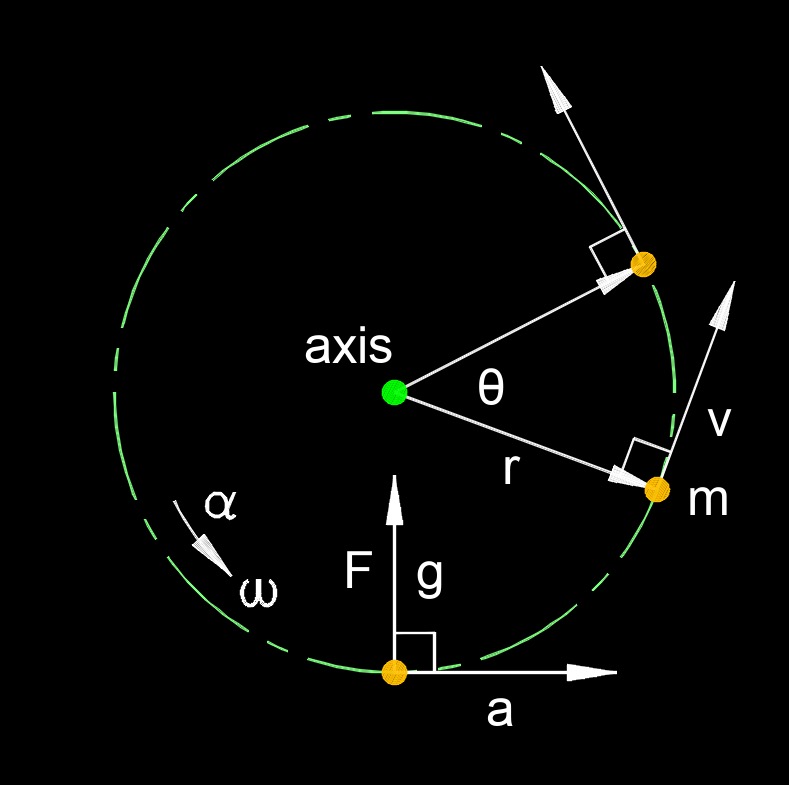Constant Angular Acceleration
Constant Angular Acceleration Formula |
||
|
\( \omega_f \;=\; \omega_i + \alpha \cdot t \) (Constant Angular Acceleration) \( \omega_i \;=\; \omega_f - \alpha \cdot t \) \( \alpha \;=\; \dfrac{ \omega_f - \omega_i }{ t }\) \( t \;=\; \dfrac{ \omega_f - \omega_i }{ \alpha }\) |
||
| Units | English | Metric |
| \( \omega_f \) (Greek symbol omega) = Final Angular Velocity | \(deg / sec\) | \(rad / s\) |
| \( \omega_i \) (Greek symbol omega) = Initial Angular Velocity | \(deg / sec\) | \(rad / s\) |
| \( \alpha \) (Greek symbol alpha) = Angular Acceleration | \(deg / sec^2\) | \(rad / s^2\) |
| \( t \) = Time | \(sec\) | \(s\) |
 Constant angular acceleration, abbreviated as \(\omega\) (Greek symbol omega), of an object is the constant rate at which the angular velocity changes with respect to time. It refers to a situation in rotational motion where an object or particle undergoes uniform and unchanging changes in its angular velocity over a specific period of time. Angular acceleration, measures how quickly the angular velocity of an object changes as it rotates. In other words, if an object is experiencing constant angular acceleration, it means that its rate of rotation is changing at a constant rate.
Constant angular acceleration, abbreviated as \(\omega\) (Greek symbol omega), of an object is the constant rate at which the angular velocity changes with respect to time. It refers to a situation in rotational motion where an object or particle undergoes uniform and unchanging changes in its angular velocity over a specific period of time. Angular acceleration, measures how quickly the angular velocity of an object changes as it rotates. In other words, if an object is experiencing constant angular acceleration, it means that its rate of rotation is changing at a constant rate.

